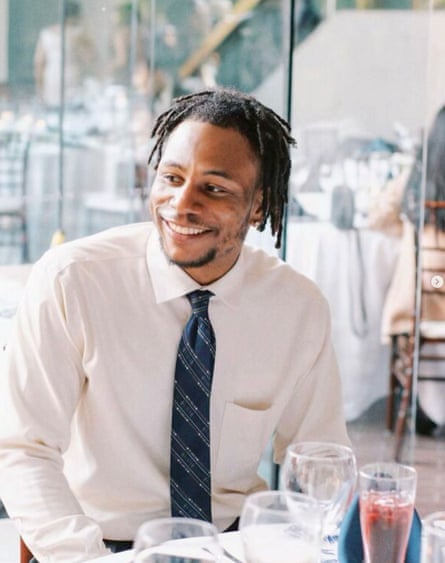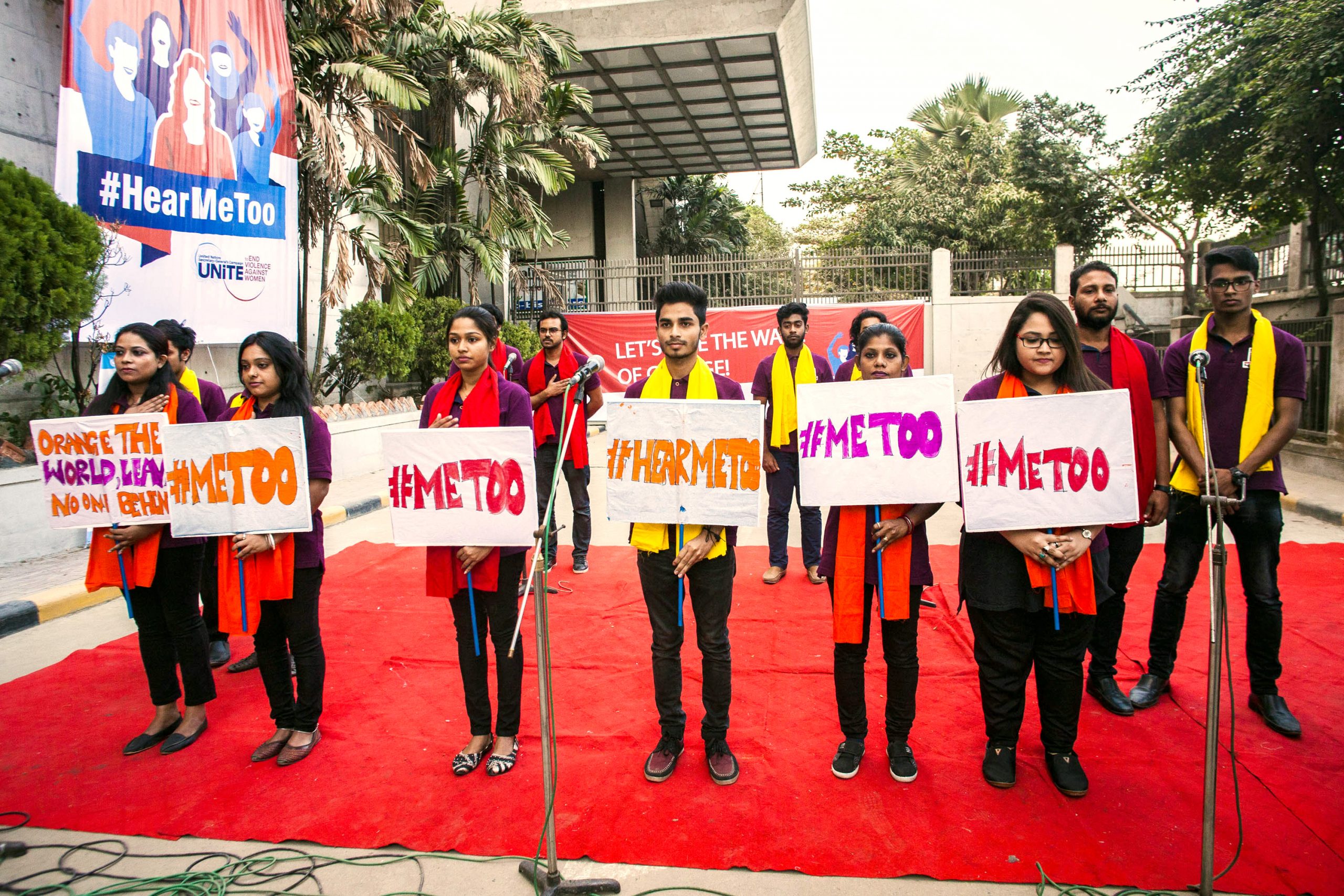A cousin of Black Lives Matter co-founder Patrisse Cullors was killed by
Los Angeles police after he got in a traffic accident and officers who showed up repeatedly Tased and restrained him in the middle of the street, according to body-camera footage and his family’s account.
Footage from the 3 January encounter released on Wednesday showed that Keenan Anderson, a 31-year-old high school teacher and father, was begging for help as multiple officers held him down, and at one point said, “They’re trying to George Floyd me.” One officer had his elbow on Anderson’s neck while he was lying down before another Tased him for roughly 30 seconds straight before pausing and Tasing him again for five more seconds.
“My cousin was asking for help, and he didn’t receive it. He was killed,” Cullors told the Guardian after watching the LAPD
footage. “Nobody deserves to die in fear, panicking and scared for their life. My cousin was scared for his life. He spent the last 10 years witnessing a movement challenging the killing of Black people. He knew what was at stake and he was trying to protect himself. Nobody was willing to protect him.”
An officer who first arrived to the car collision at around 3.30pm at Venice and Lincoln boulevards found Anderson in the middle of the road, saying, “Please help me.” The officer told him to go on the sidewalk, and issued commands, saying, “Get up against the wall.” Anderson held his hands up, responding, “I didn’t mean to. I’m sorry.” Anderson complied with the officer’s commands and sat down on the sidewalk. After a few minutes, he appeared to be concerned with the officer’s behavior, saying, “I want people to see me,” and “You’re putting a thing on me.”
Anderson was in a car collision and needed help, but was repeatedly Tased by the police. Photograph: Courtesy of Patrisse Cullors
Eventually, Anderson started to flee, at which point the officer chased him on his motorcycle, shouting, “Get down to the ground, now,” and “Turn over on your stomach.” Anderson repeatedly responded, “Please help me,” and “They’re trying to kill me,” as multiple officers arrived and held him down. One of them placed his elbow and bodyweight on Anderson’s neck while he was lying with his back on the ground. At this point, the officer standing above him shouted, “Turn over or I’m going to Tase you.”
During the Tasing, Anderson repeatedly said, “Help me,” as the officer told him to stop resisting.
Paramedics later arrived at the scene and took him to a hospital where, according to the LAPD, he went into cardiac arrest four and a half hours later and died.
‘His death could’ve been prevented’
Cullors and other advocates have questioned why it was necessary for armed police to show up to a collision.
“It was a traffic accident. Instead of treating him like a potential criminal, police should have called the ambulance,” said Cullors. “If there was a policy in which traffic stops were met with unarmed professionals who come to the scene to help with whatever situation has happened, that would have prevented my cousin’s death. And that would have prevented so many other deaths.”
She added, “These types of killings and this type of force will not be interrupted unless we have courageous elected officials come forward and challenge not just the police, but also the policies.”
National data has shown that roughly 10% of killings by police each year
start with a traffic encounter, and that one in three people killed were
fleeing before lethal force was used. Last year was the deadliest year for police violence since experts started tracking killings nationwide in 2013, according to a
recent analysis. The LAPD has also fatally shot two people so far this year, and in 2020
killed Daniel Hernandez after he was in a car accident.
While some law enforcement officials and reform proponents have argued that Tasers are a “less lethal” weapon and an important tool to reduce police violence, experts and racial justice advocates have increasingly
raised concerns about the mass deployment of stun guns. There is growing evidence of the potentially fatal consequences of Taser use, with a Reuters
investigation finding more than 1,000 cases between 2000 and 2018 where people died after they were Tased.
Studies have also raised questions about the claim that Tasers provide a useful alternative to firearms, with research in
San Francisco and
Chicago suggesting that the widespread adoption of stun guns did not reduce fatalities, but that police were using Tasers in cases when they previously would have used no weapon. There have also been more than a dozen shootings by police in which the officers
claimed they accidentally used their gun instead of their Taser, including the deaths of Oscar Grant and Daunte Wright.
Black Lives Matter co-founder Patrisse Cullors: ‘These types of killings and this type of force … challenge not just the police, but also the policies.’ Photograph: Jae C Hong/AP
Dr Melina Abdullah, co-founder of Black Lives Matter Los Angeles, who went with Cullors to watch the body-camera footage, said on Wednesday: “It’s a reminder that when we say ‘Black lives matter,’ we mean our own Black lives, too. We’re not fighting for some cause, we’re fighting for our own lives and for our people.”
The LAPD chief, Michel Moore, said in a news
conference that Anderson’s behavior was “erratic” and he suffered a “medical emergency”. He claimed that a preliminary blood test revealed cannabis and cocaine in Anderson’s system. A formal cause of death, however, has not been determined, and advocates have criticized the department for releasing that information and suggesting drug use was related to his death.
“Keenan’s murder is absolutely horrific. LAPD is not calling it a ‘killing’, but calling it an ‘in-custody death’. But Keenan was Tased to death. We know LAPD caused Keenan’s death,” Abdullah said. “We know that a minor traffic accident shouldn’t result in the death of anyone, let alone the death of this Black man, who was clearly unarmed and wasn’t doing anything wrong.”
Moore said the Taser was “activated” against Anderson 10 times, but that not all deployments were “effective”, adding, “It’s unclear what role the physical struggle with the officers and the use of the Taser played in his unfortunate death.” He claimed Anderson was in an “altered mental state” and that as the investigation continues, “I will play close attention to the use of the Taser.”
Under LAPD policy, he
said, “There is no pre-set limit on the number of times a Taser can be used in a particular situation, however, officers should generally avoid repeated or simultaneous activations to avoid potential injury.”
Cullors said she didn’t know his mental state, but that he appeared to be “terrified of police” and in crisis after getting in a crash.
Mayor Karen Bass called the footage of Anderson and the two fatal shootings this month “deeply disturbing” in a statement, adding, “We must reduce the use of force overall, and I have absolutely no tolerance for excessive force … When there is no immediate risk to others, law enforcement must not be the first responder when someone is experiencing a mental health crisis.”
‘A committed educator’
Anderson, who leaves behind a young child, was working as an English teacher at the Digital Pioneers Academy, a majority-Black school in Washington DC, and was visiting LA, said Cullors. He previously worked at several other schools, including a charter school in Watts in LA.
Cullors said she and Anderson were part of a large family that migrated from Louisiana “to get away from racism, to get away from the terrorizing of white supremacists and the structures that impact our communities”.
Cullors, a longtime organizer who has talked about her
brother’s abuse in LA jail, is one of three women credited with founding the Black Lives Matter movement in 2013 after George Zimmerman was acquitted of murdering Trayvon Martin in Florida.
“I think about the migration of Black people and what we do to try to keep our families safe, and coming to
California and Los Angeles as this ‘western haven’. Given the impact law enforcement has had on so many of my family members and now the killing of my cousin, it’s painful, because he was so committed to family.”
Cullors continued: “He was so committed to his students. He was so present for them and was an educator who believed in education.” She recalled how Anderson at a young age was driven to “be a better human being, to make a difference and to impact people’s lives”.







